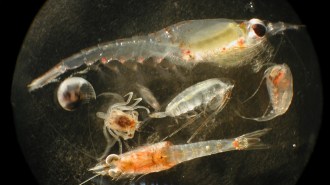- More than 2 years ago
Researchers have developed and field-tested a new technique that identifies specific soil microbes that can break down environmental pollutants. The bacteria could be used to clean up toxic-waste sites.

Eugene Madsen of Cornell University and his colleagues tested their technique at a coal tar waste site associated with an old gasworks. The researchers labeled a test sample of naphthalene–a common, seemingly benign coal tar component–with the isotope carbon-13 and released the chemical into the soil. The researchers then covered patches of soil with 250-milliliter glass jars. If a plot harbored soil bacteria capable of metabolizing the naphthalene, carbon dioxide that included carbon-13 built up in the jar over that soil.
Because these bacteria also incorporate carbon-13 into their DNA, Madsen and his coworkers could identify a specific strain of naphthalene-degrading bacteria. The findings appear in the Nov. 11 Proceedings of the National Academy of Sciences(PNAS).
Although other researchers have isolated bacteria in the lab that can degrade specific toxic chemicals, the same bacteria usually die off when released at a cleanup site, says Madsen. The trick, he says, is finding which bacteria metabolize pollutants in their natural environment. The researchers plan to test their screening technique to find microbes that break down carcinogenic chemicals at coal tar waste sites.
****************
If you have a comment on this article that you would like considered for publication in Science News, send it to editors@sciencenews.org. Please include your name and location.







